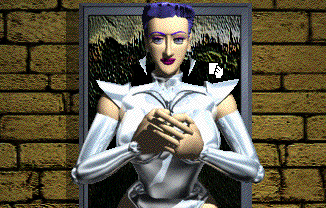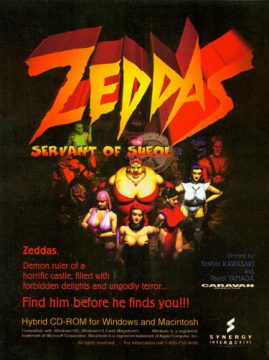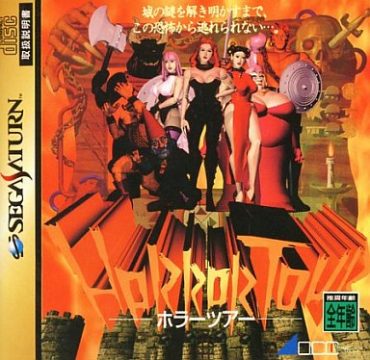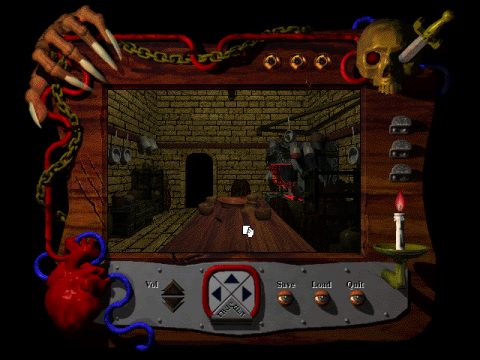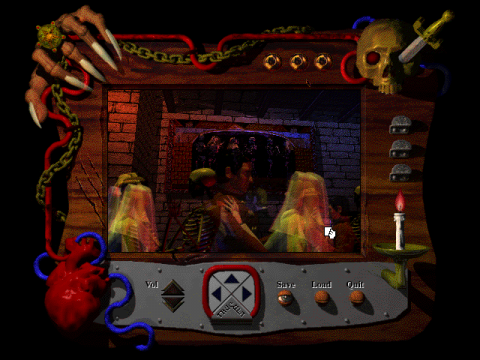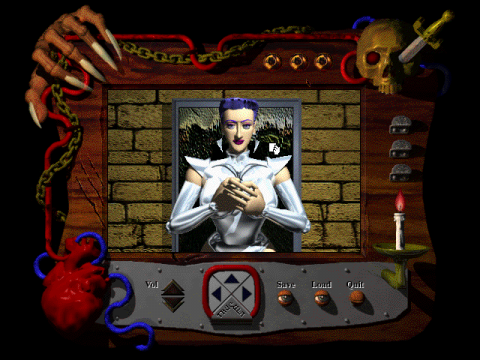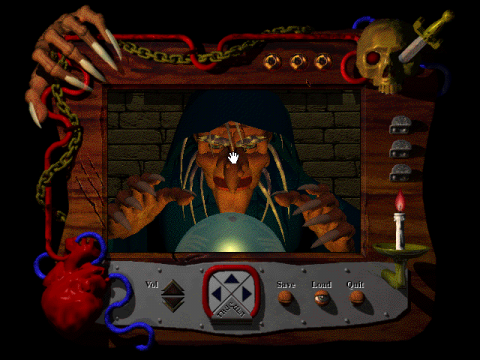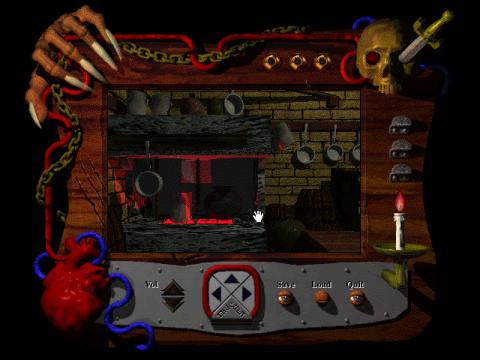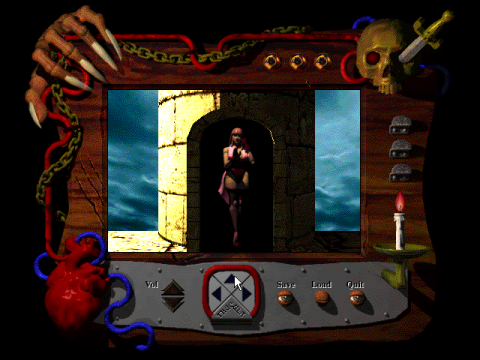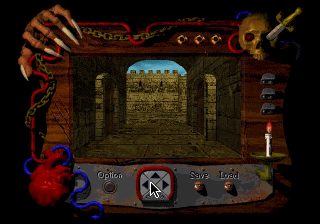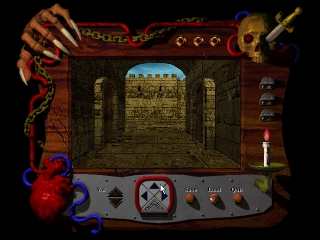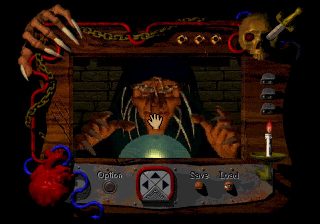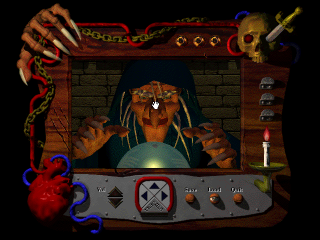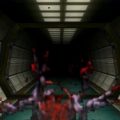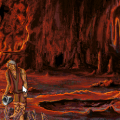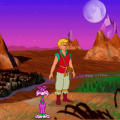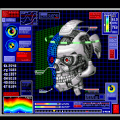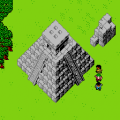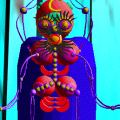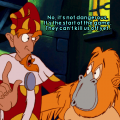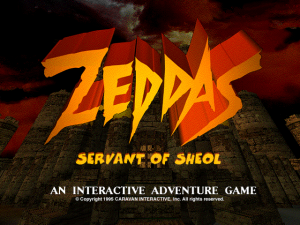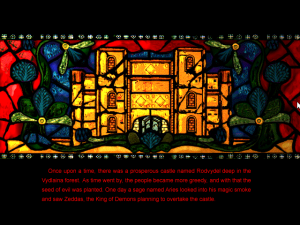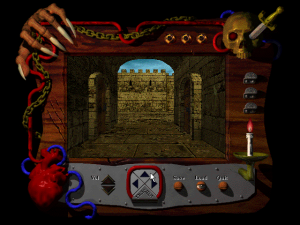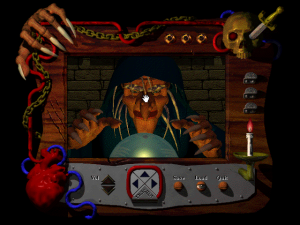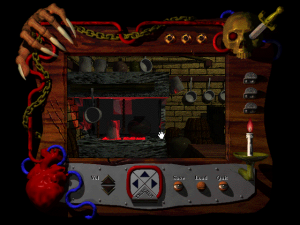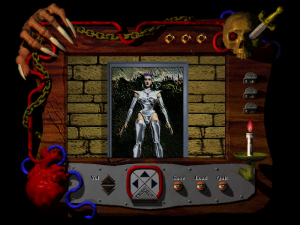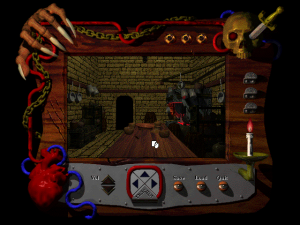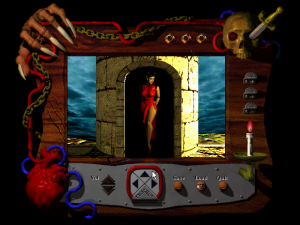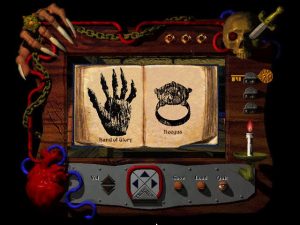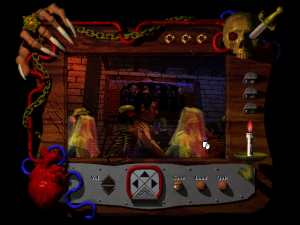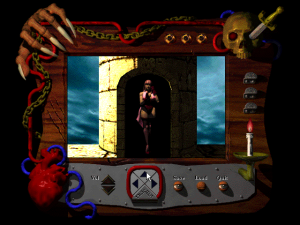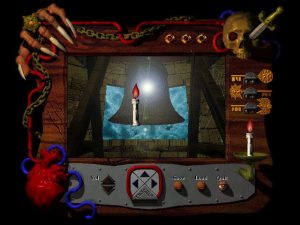- Zeddas: Servant of Sheol
- Zeddas: Horror Tour 2
The gradual adoption of the CD and 3D technologies in the early 1990s is remembered today with equal parts wonder and embarrassment. We admire the intrepidity of those studios that were willing to explore what essentially was an unknown frontier of video game development, and the innovations they pioneered that went beyond the conventional use of CD-ROMs as a viable format of storage. Myst, though certainly not the first game, was the title in particular that made the greatest contribution to the transition of games migrating to the CD format. Of course the success of these games invariably led to a trend in companies developing games that purported to “elevate” the medium of video games to maturity, often incorporating elements such completely fully 3D-rendered backgrounds, digitized actors, and “adult” content interspersing mature story-lines in an attempt to blur the lines between video games, Interactive Fiction, and Hollywood.
Broadly speaking the Japanese video game industry seems to have ignored this trend and this may be attributed perhaps to a two reasons. Firstly, CDs as means of game storage had been adopted in Japan some years before the West as was seen with the inclusion of a CD drive in home computers such as the Fujitsu FM-Towns, as well as CD-based addons for consoles such as the NEC PC Engine’s CD-ROM2. Therefore Japanese companies had a lot longer to experiment with the technology and as a result by the early 1990s they were not pressured by the industry at large to push its capabilities to the market as was the case with Western developers.
Secondly it could be argued that in some regards there wasn’t a necessity to emphasize the potential maturity of games because to some extent there already existed an “adult” video game market in Japan in one guise or another, something that needs little elucidating. However, like in the West, the runaway success of Myst revolutionized the adventure game genre in Japan, leading to a slew of (initially) Japanese-only first person 3D adventure games across platforms such as the 3DO, Sega Saturn, Sony PlayStation, as well as Windows 3.1 and Macintosh computers.
If it wasn’t frustrating enough that early 1990s adventure titles no matter where they were released in the world have a bad habit of fading quickly into obscurity even beyond the Internet (who remembers the two Peter Gabriel games?), it becomes a maddening experience for a foreigner to find such games that were exclusively released in Japan, particularly as their respective online communities are less inclined to rip the discs for them. In spite of this however some of these titles actually did get released over here, the more well-known of them amongst Western audiences being Cosmology of Kyoto, Kenji Eno’s D, Haruhiko Shono’s offerings of Alice: An Interactive Museum and Gadget: Past as Future, and LSD-creator Osamu Satou‘s head-trip adventure game Eastern Mind: The Lost Souls of Tong-nou. They all share similar characteristics in what we might broadly define as the Japanese school of thought in the philosophy of adventure software, in that they dispense with (or in the very least strip away the complexity of) certain conventions such as inventory management and puzzle-solving in favor of emphasis on story and atmosphere for a more streamline interactive multimedia experience.
Speaking of obscure Japanese adventure games from the 1990s, there is Zeddas: Servant of Sheol, known in Japan as Horror Tour. It was developed by an outfit named Caravan Interactive. In the West they might as well not exist. The name crops up in directories of studios in various video game websites but apart from that almost little beyond their association with Zeddas. In fact most websites credit the game to its publisher in the West, Synergy Interactive, who were responsible for such interactive titles on Windows 3.1 and Macintosh as the aforementioned Alice: An Interactive Museum and Gadget: Past as Future.
Zeddas: Servant of Sheol was released on DOS/Windows 3.1 and Macintosh as a hybrid CD-ROM in 1995, though it was also released on Sega Saturn in Japan by its title Horror Tour. From the few mentions of it online, as well as comments on Nico Nico Douga, it is regarded as a ‘kusoge’ in Japan. The back of the box grandly states:
“Dare You Match Wits With the King of Demons?
IN A MURKY CASTLE, IN A HIDDEN WOOD, A HOST OF DIABOLICAL MYSTERY AWAITS YOU.
Long ago, Rodvydel Castle fell into the evil grasp of Zeddas, who worked his foul spells upon the place to hide it from mortal eyes. Now you must walk these same haunted halls, trying to undo the harm this demon has wrought. Can you restore the castle? You must pit your own cunning against the fiend’s treachery to unravel the sinister mysteries of this place.
But beware – the King of Demons keeps a warm place ready for those who would meddle in his affairs!
ABANDON HOPE, ALL YE WHO ENTER HERE!
EXPLORE the labyrinthine corridors of the woeful castle DISCOVER clues to the whereabouts of keys and other mystical items that can help you in your quest SOLVE the nefarious obstacles created by Zeddas to foil would-be heroes SEE this interactive tale of horror unfold before your eyes in QuickTime movies and fully-rendered 3D graphics HEAR the eerie CD-quality music and sound effects that set the mood for this haunting adventure. FEEL the dread only Zeddas can inspire!”
Judging from this description it would be natural to believe that Zeddas is a horror-based adventure game riddled with obstacles and puzzles to test the greatest of minds. Such illusions were instantly dispelled in the sales pitch of the PR rep from Synergy in a post found in Google Groups from 1996 (what are the odds?):
“I work for the company that publishes ZEDDAS, so I thought I’d give you some of the information you requested. It just shipped this week, so you probably won’t find too many people who have played the game yet. You can catch a review for ZEDDAS in the Jan issue of CD-ROM Today. Anzovin gave it 3 1/2 stars and calls it a “wildly over-the-top” game. Hotwired featured a review last month, and Dinello says, “Like the recent CD-ROMs Burn:Cycle and Buried in Time, Zeddas combines the puzzle/exploration style of Myst and Gadget [another one of Synergy’s titles] with the blood splattering action of Doom and Dark Forces.” It’s creepy, and it’s campy!”
This is all confusing: was it supposed to be serious or was it intended to be kitsch?
The game begins with a fairly standard (for fantasy fiction) introduction relating the history of Rodvydel Castle and how it was taken over by the King of the Demons who, with his dark magic, trapped the inhabitants inside for all eternity. This account is also shown through stain glass window scenes which tie in neatly with the medieval aesthetic. What should be pointed out is that there is no indication as to who you are, who summoned you, or why exactly you alone were chosen to banish the curse of Rodvydel Castle. It can only be assumed that this ambiguity was intentional, the implication being that it is the player themselves much in the same way the first Myst did. You start the game by entering your name which has no bearing on the game barring the title of your save file. Having entered your name into the annals of gaming history you are instantly hurtled through the dark forest right up to the entrance of Rodvydel and then you finally have control. The one thing that strikes you immediately, particularly in contrast to how blindingly fast you just made it to the castle is how agonizingly slow you move.
Movement is controlled by arrows at the bottom of your screen, clicking one moves you in that direction. What’s clear is that, unlike Myst, which utilized a loosely similar movement system, Zeddas is rendered fully with videos. The monotony of walking at such painful slowness is compounded by the accompanying sounds of footsteps, reminiscent of LSD. The complaint here is not so much that the walking speed is so crippled as the fact that there is clearly evident delay in the input and the resulting action, which makes for some frustrating deaths in the few times that call for split-second decisions.
You can interact with objects in the game through the standard practice of clicking on them, whether it be opening a door, ringing a bell, or talking to an NPC, standard adventure game mechanics. What isn’t made clear to the player is that the rather cumbersome-looking HUD is in fact your inventory and menu rolled into one. That clawed hand in the top left? You store a ring you find in the game on one of it’s fingers. That candle in the top right? That isn’t for a direction, it’s actually one of many items you need to defeat the Demon King. To use it you drag it out and voil? you can now light fireplaces with it. Later on you collect more items such as sword, and the ring is needed to defeat the few hostile NPCs you encounter in the mazes later on in the game, mostly goblins.
Without revealing too much, the puzzles are not as taxing as the game’s blurb would like to make out. Anyone who has played Myst or any of its sequels and derivatives will have no problem so long as they take notes and listen to what characters have to say. As has already been stated the game is pretty much a standard adventure game, playing like a distillation of the purest essences of game mechanics already implemented by Myst and the ICOM adventure games, with a little bare-bones dungeon-crawling added into the mix.
Aesthetically the environs of Rodvydel are nicely detailed with little touches that add to the haunted-castle vibe of the game: metal spikes, cobwebs, skeletons in chairs with arrows in their eyes, and much more. There is not much to say beyond that other than the fact that you are definitely in a spooky castle. The NPCs on the other hand are the very stuff of nightmares. In the early days of 3D games developers seemed to adhere to either one of two styles when it came to depicting living things: low, flat polygons or what can only be described as shiny plasticine (a good reference to this style is the Dreamcast game The Ring: Terror’s Realm). Zeddas is very much in the latter camp. Initially there is hardly anyone around to talk to, which enhances the sense of isolation one would expect from a putatively deserted castle. Only when you explorer deeper into the bowels of Rodvydel do the dramatis personae of this penny dreadful make themselves known.
To say that they are colorful would do a disservice to their outright bizarreness. There is a witch fortune-teller who you can bring book-pages to for hints, the captain of the guard who is trapped in a painting, a cowled monk, several undead soldiers, a duo of a minotaur and devilman who like to drink and fight anyone, a monstrously fat lady who runs a target shoot minigame, and perhaps most inexplicable of all a garden gnome bartender. Then there are the young women who you run into at various points in the game who don’t seem to be either friend of foe, though they are no less strange then the other denizens, mostly for the fact they are so out of place in appearance. There’s a girl in a qipao, a Marylin Monroe lookalike, a Dominatrix in full S&M gear, a girl who may as well be Jessica Rabbit, and a woman in pink lingerie and hair to match.
Their purpose for being in the game is never directly explained: at times they appear to be prisoners of the Demon King and at other times they seem so blas? at their predicament that you wonder if the whole venture is just one big joke at the player’s expense. In one particularly memorable scene you walk into a dungeon to find them all engaging in a bondage party (though nothing outright explicit), while an unfortunate undead man bemusingly looks on upside down in a torture rack. What’s funny about this is that it’s actually possible to die here if you ask the Dominatrix to whip you. The pink haired woman will treat you to a sultry dance later on in the game for absolutely no reason at all, though the disco accompaniment on keyboard is rather nice. Speaking of which the music in general in the game is just as schizophrenic as the inhabitants: alternating between cheesy synthesized organ music reminiscent of Hammer Horror films (in fact the whole game as it seems encapsulates that campy 70s horror vibe) and ambient stereotypical ambient haunted house compositions.
Although expectations were relatively low to begin with, the ending to this game still came off as a massive disappointment. After collecting all the items needed to confront the Demon King, which is exceedingly tedious thanks to all the backtracking throughout the entire castle (funny how a lot of games have such convoluted designs for what are essentially people’s houses, just look at Dracula’s castle in Castlevania or the mansion in the first Resident Evil), you would not be wrong in hoping for a great climax to finish off the culmination of all the effort of actually sticking with this game to the bitter end.
To the game’s credit the finale is surprising, but only because of how underwhelming it proved to be. To defeat Zeddas, this great and mighty King of the Demons, who you have “matched wits” with throughout the entire game you must use the dagger you found earlier in the game, not by equipping it and engaging him in deadly combat, but by simply dragging the dagger from the HUD onto his head as if you were moving a file to the recycling bin on your desktop. Up to this point the game had been a reasonable challenge: not a great game but competent, but any chances at redemption were quashed by this last segment that is eerily similar to a lot of the bosses in the Zelda CD-I games. Compared to the puzzles comprised most of the gameplay this “boss fight” is almost insulting to the player’s intelligence in the little thought that’s required to win it.
The Saturn version uses the same interface as the Windows version, so you need to move with cursor with the controller. The resolution is cut in half, and the video compression is worse, but it runs quite a bit better.
Taking this into account it is easy to understand why Zeddas: Servant of Sheol is looked upon so poorly in Japan. Like similar titles such as Mansion of Hidden Souls on the Sega Saturn, Zeddas puts its gimmick of 3D graphics and CD-quality audio ahead of any notion gameplay, and in this regard it should be treated more as a tech demo of what better games could look like on cutting-edge hardware. While the publishers of the game like to advertise it as both an adventure game and interactive story, what’s evidently clear is that both the adventure game mechanics and the plot are so rudimentary, so bare-bones, that both were intentionally relegated to the backseat in favor of pushing the title as some sort of interactive 3D movie. Ironically that makes the game enjoyable to watch rather than play, and because of this it’s worth it to watch the Nico Nico playthrough over the pain of playing it if you have an hour to spare and are in the mood for a good laugh.
